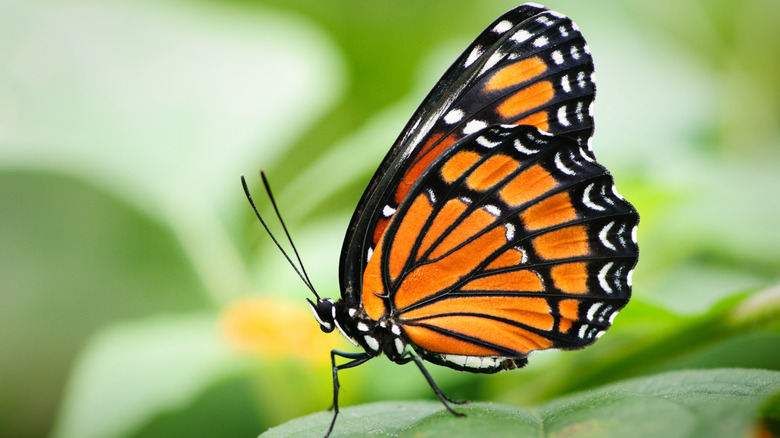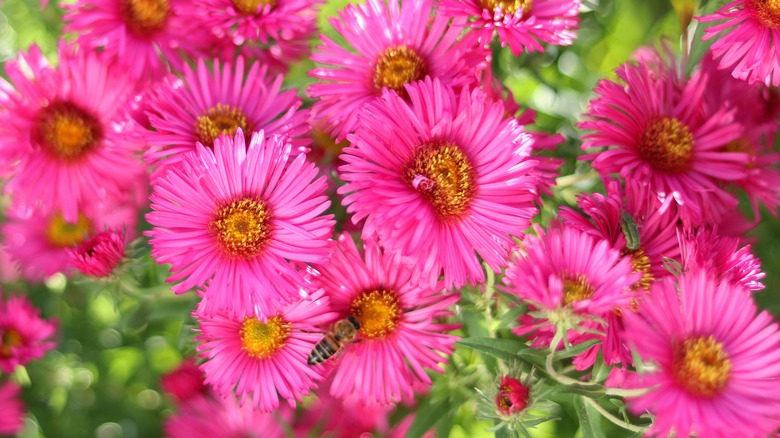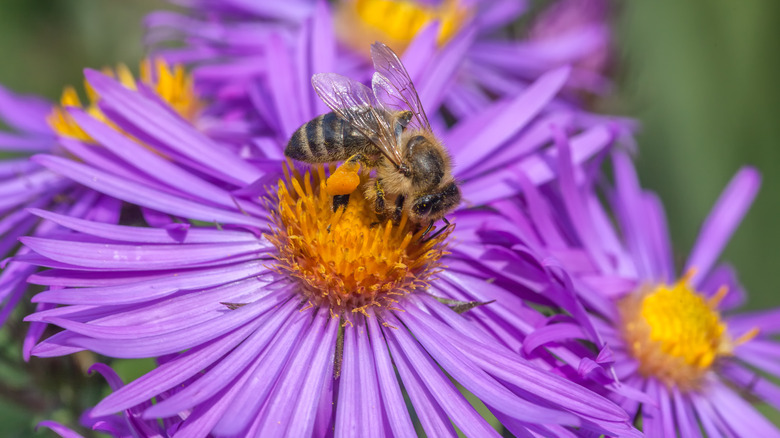The Perennial Flower Perfect For Attracting Pollinators With Late Summer Blooms
The end of the summer can bring mixed feelings for gardeners as their once lively flowers wind down. For those with asters in their yard, however, the blossom party is just getting started. Asters are the answer to late-season-loving gardeners' prayers because these daisy-like flowers bloom in the late summer and fall, typically from late August to the first heavy frost for your area. The late-blooming nature of asters make them a great addition to a pollinator garden for bees who need to stock their hives with food for the winter. They're also important for monarch butterflies, who need sustenance to make their migratory trek to Mexico each fall. Asters bring life back into a garden that would otherwise be winding down for the season and support pollinators along the way.
To get the most from the asters you plan to grow for your pollinator garden, ensure that along with proper soil conditions, you pay close attention to their water consumption, and pruning needs. Doing so ensures the most prolific amount of flowers possible. Additionally, when deciding which asters to plant, narrow down your selection to the non-invasive, native species, since these types of asters are the most beneficial for local pollinator populations.
Caring for asters to promote abundant late summer growth
Like with any other flower, great care leads to better blossoms and the same goes for the aster. To ensure this late-blooming perennial provides a showy floral display in your garden, start by planting the flowers in nutrient dense, loamy or clay soil. Asters are hardy in zones 4 to 8 and can be especially sensitive to the moisture levels of their soil. They become stressed when any extreme — whether too much or too little water — is reached. Both their leaves and flowers suffer, as a result. It's typical for the bottom portion of their foliage to fall off and for their flower growth to stunt. As such, it's important to water them regularly throughout the summer, particularly if your location receives less than 1 inch of rain during the season.
Additionally, pruning one to two times is key to have your aster blooming profusely in the late summer. In the beginning of the season, pinch or cut back ⅓ of the plant to encourage a bushier growth habit that prevents the plant from looking leggy. Pruning early in the season also gives the plant time to grow new flowers so you have abundant blooms throughout the summer, and more so, as fall approaches.
Choosing non-invasive asters for your pollinator garden
No doubt, the aster is one of many colorful flowers that will bring bees into your yard, along with other pollinating insects. With over 250 types of asters available, your best bet to get the most bang for your buck in your pollinator garden is to choose non-invasive asters. Non-invasive asters ensure that your pollinator garden is as supportive to pollinator populations as possible. Local pollinators have evolved with these varieties and these plants offer more nectar and pollen compared to ornamental aster cultivars. The New England and New York asters are two species that are native to North American gardens.
New England asters bloom with gorgeous purple flowers, but can also come in magenta. Similarly, New York asters can be found in pink to blueish-purple colors. Others to consider include smooth aster, azure aster, heart leaved aster, and calico aster. Meanwhile, the entire aster genus is native to Eurasia, northwest Africa, Canada, and the northwest U.S.. For those living within the United States, you can find aster varieties that are native to your specific planting location, by contacting your local cooperative extension.


